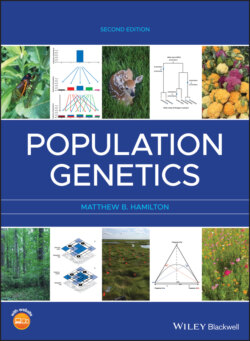Читать книгу Population Genetics - Matthew B. Hamilton - Страница 17
1.3 Simulation
ОглавлениеA Method of Practice, Trial and Error Learning, and Exploration
Imagine learning to play the piano without ever touching a piano or practicing the hand movements required to play. What if you were expected to play a difficult concerto after extensive exposure (perhaps a semester) to only verbal and written descriptions of how other people play? Such a teaching style would make learning to play the piano very difficult because there would be no opportunity for practice, trial and error, or exploration. You would not have the opportunity for direct experience nor incremental improvement of your understanding. Unfortunately, this is exactly how science courses are taught to some degree. You are expected to learn and remember concepts with only limited opportunities for directly observing principles in action. In fairness, this is partly due to the difficulty of carrying out some of the experiments or observations that originally lead someone to discover and understand an important principle.
In the field of population genetics, computer simulations can be used to effectively demonstrate many fundamental genetic processes. In fact, computer simulations are an important research tool in population genetics. Therefore, when you conduct simulations, you are both learning by direct experience and learning using the same methods that are used by researchers. Simulations allow us to view how quantities like allele frequencies change over time, observe their dynamics, and determine whether a stable end point is reached: an equilibrium. With simulations, we can view dynamics (change over time) and equilibria over very long periods of time and under a vast array of conditions in an effort to reach general conclusions. Without simulations, it would be impossible for us to directly observe allele frequencies over such long periods of time and in such diverse biological situations.
